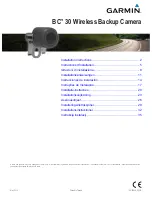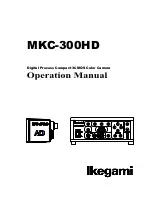
NED
RCDL4K8GE
UME-0111-01
84
5 Basic Camera Setting Checks
5.1 Before Power On
Check whether there are any dents or scratches on the camera. There might have
been damage to the camera’s connectors or internals during transport.
①
Check the pin assignments of the power cable(See figure 3-3-1 and table 3-3-1)
②
Check that your network device supports 1000-Base T and Jumbo Frames.
Note:
If your device does not support the above, the network transfer speed will be
adjusted to that of the slowest device. It may not be possible to capture images
correctly due to data loss.
③
Check the d
evices’ interconnectivity.
Note:
Use a CAT-5e or above LAN cable. In cases where cable length is long, CAT-6 or
above is recommended.
Be sure that the network on which you connect your GigE camera is a dedicated
network and not shared with any other data transmitting devices. Not only will image
data not be correctly obtained, it may also interfere with the data transmission.
If you are connecting multiple cameras, check the camera output data rate and
the network bandwidth, and set the packet delay appropriately.(See 4.4)
5.2 After Power On
①
Using a GENiCAM
TM
compatible camera control software package (such as the
included GigEGrab), execute camera discovery and confirm that the camera features
can be read.
②
Set the exposure mode (trigger mode), video output format, etc.
③
Start image capture with a GigE Vision
®
compatible viewer software package.
Note:
If you are using a firewall or security software, it may not be possible to receive image
data. In this case either change the settings or stop the software.








































